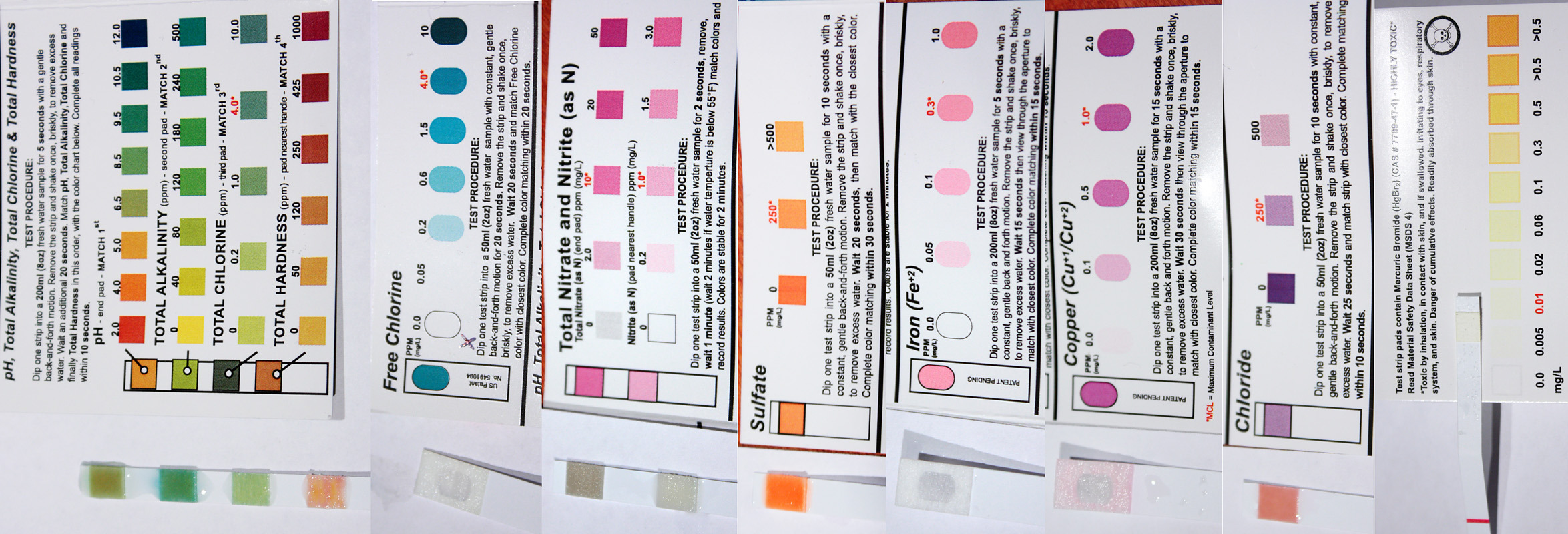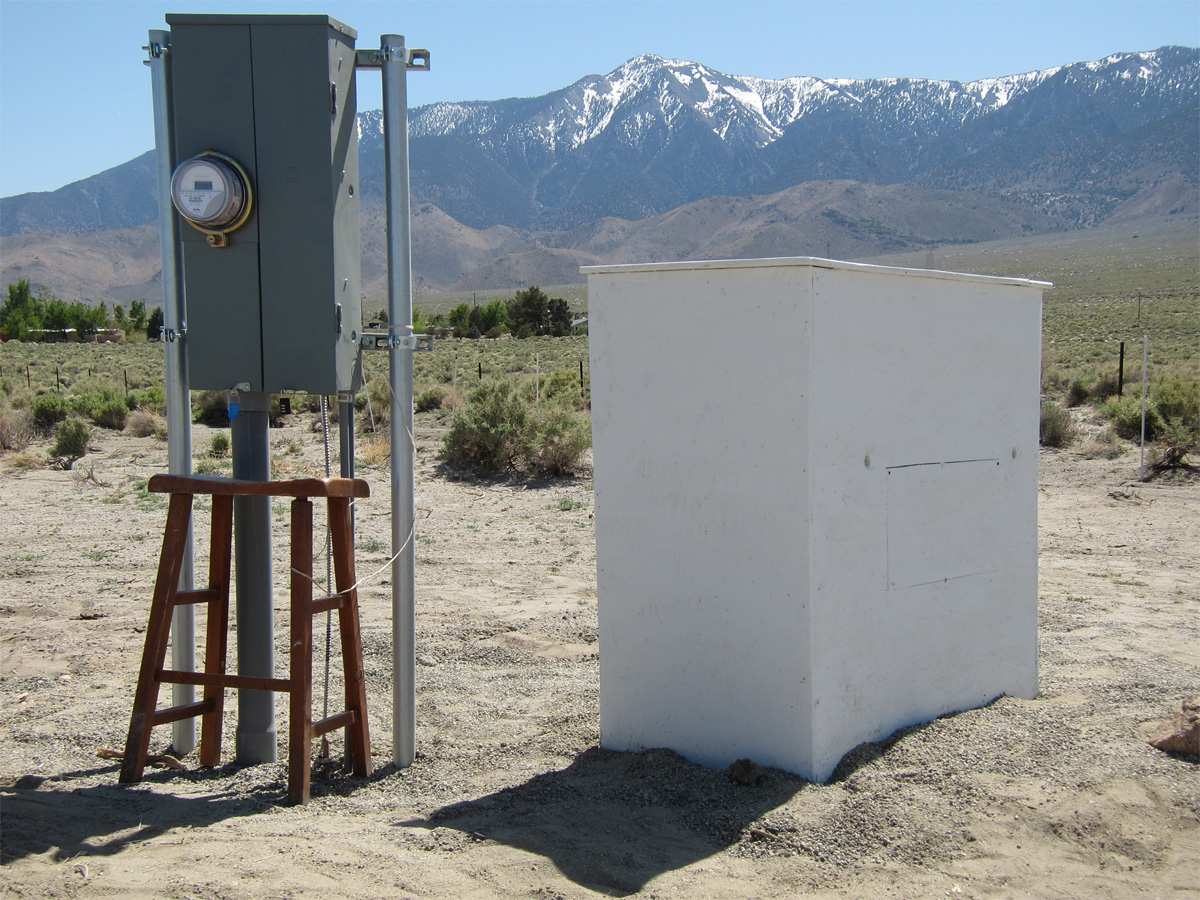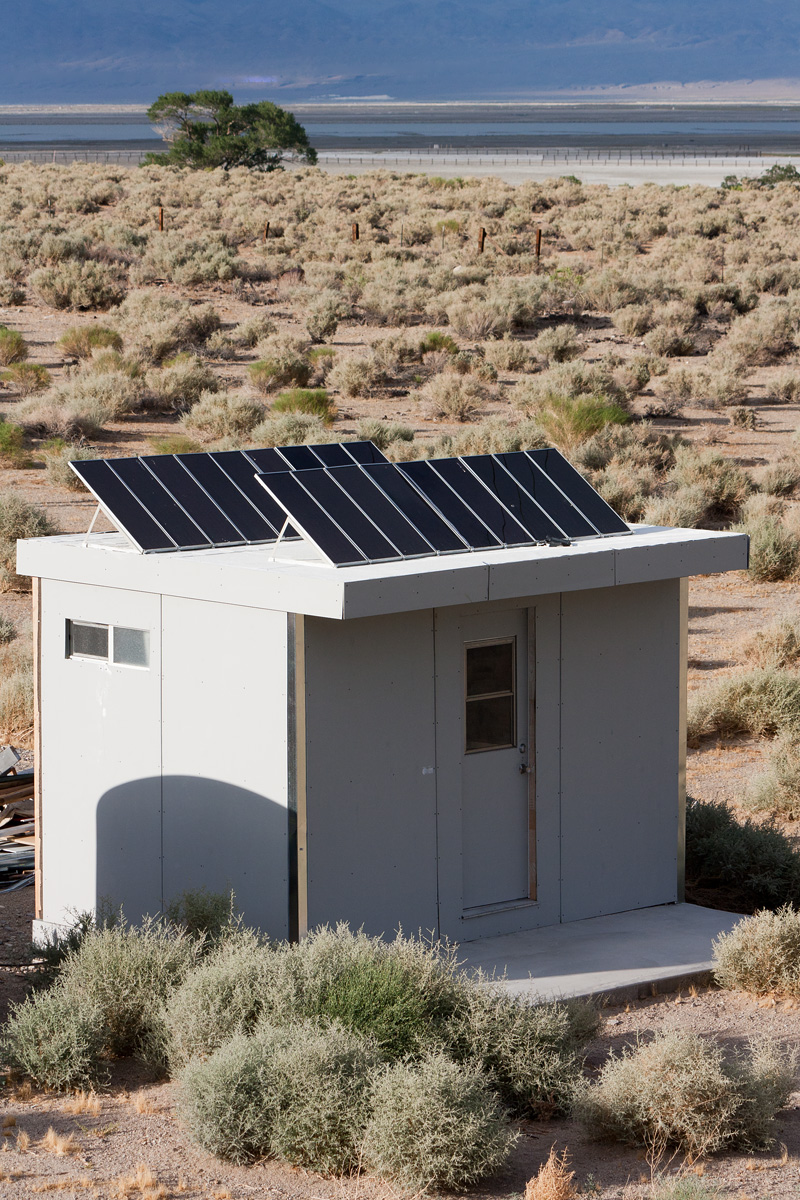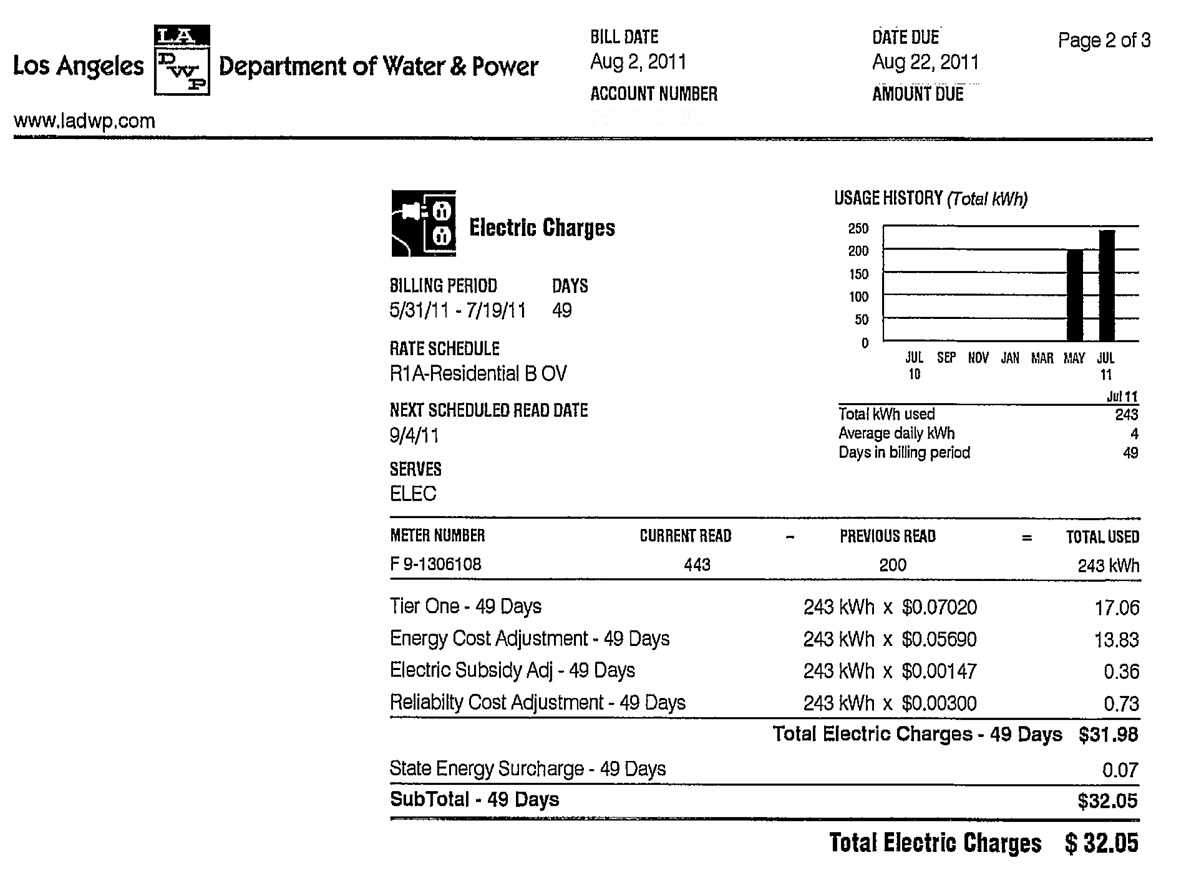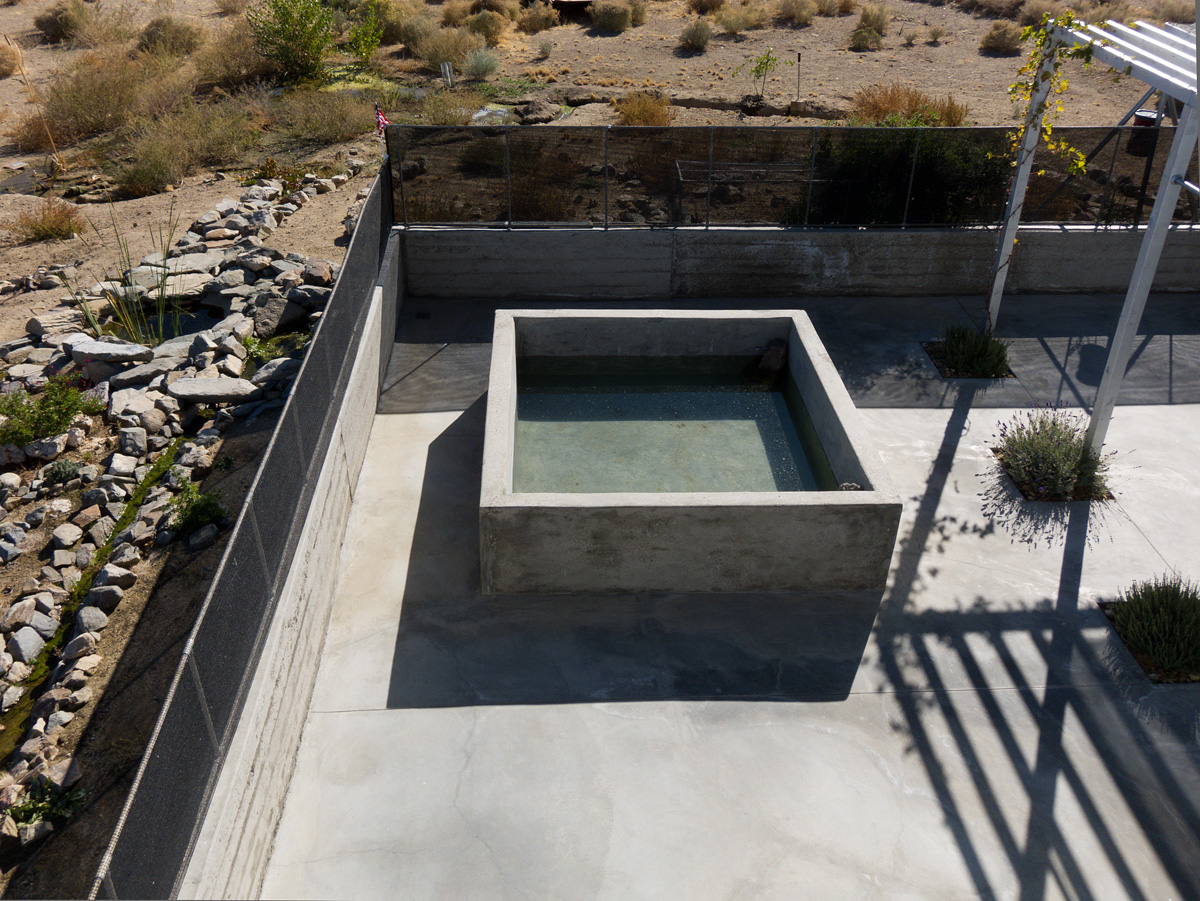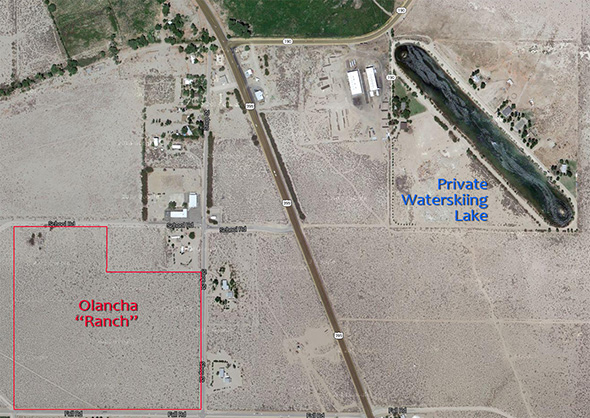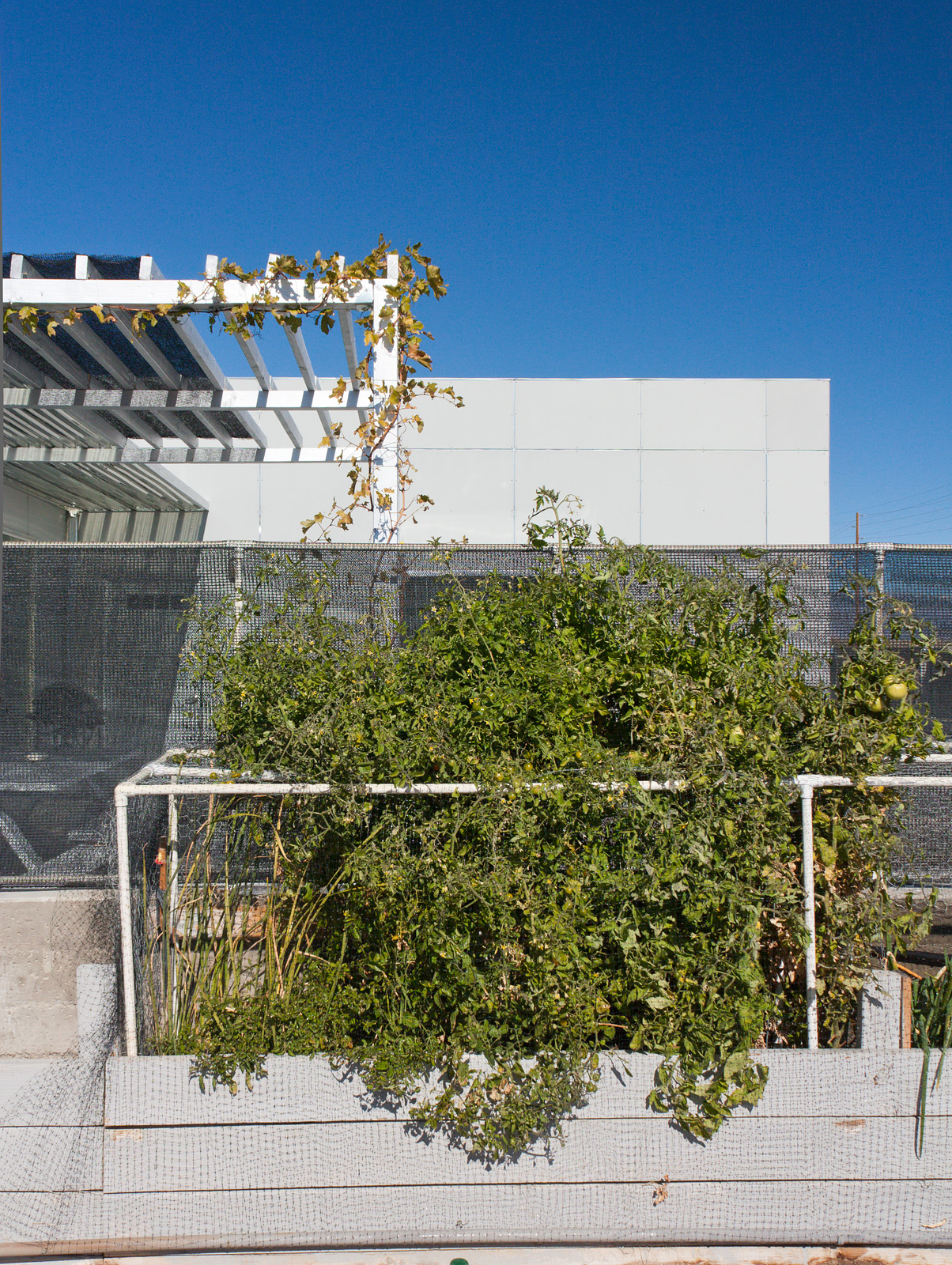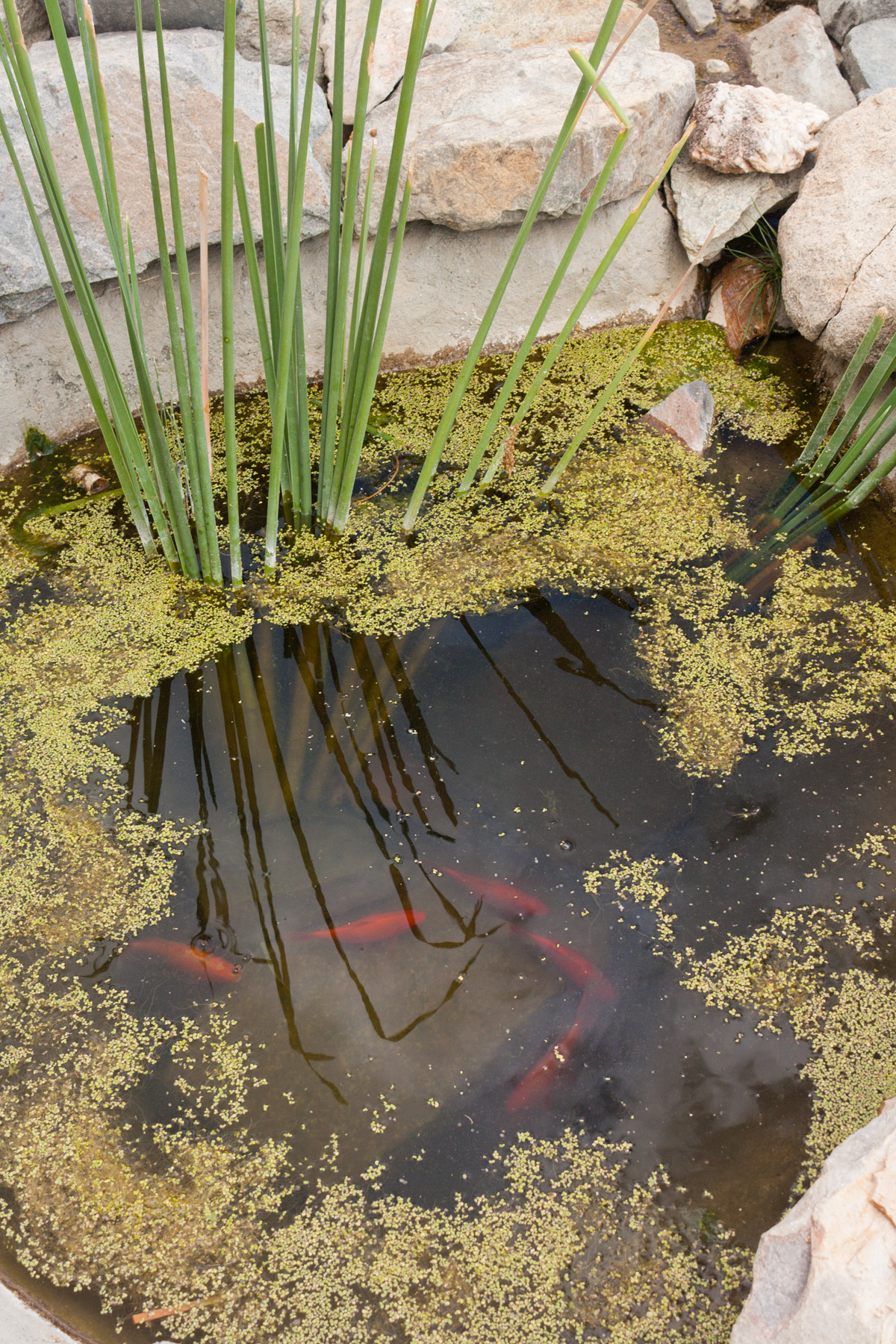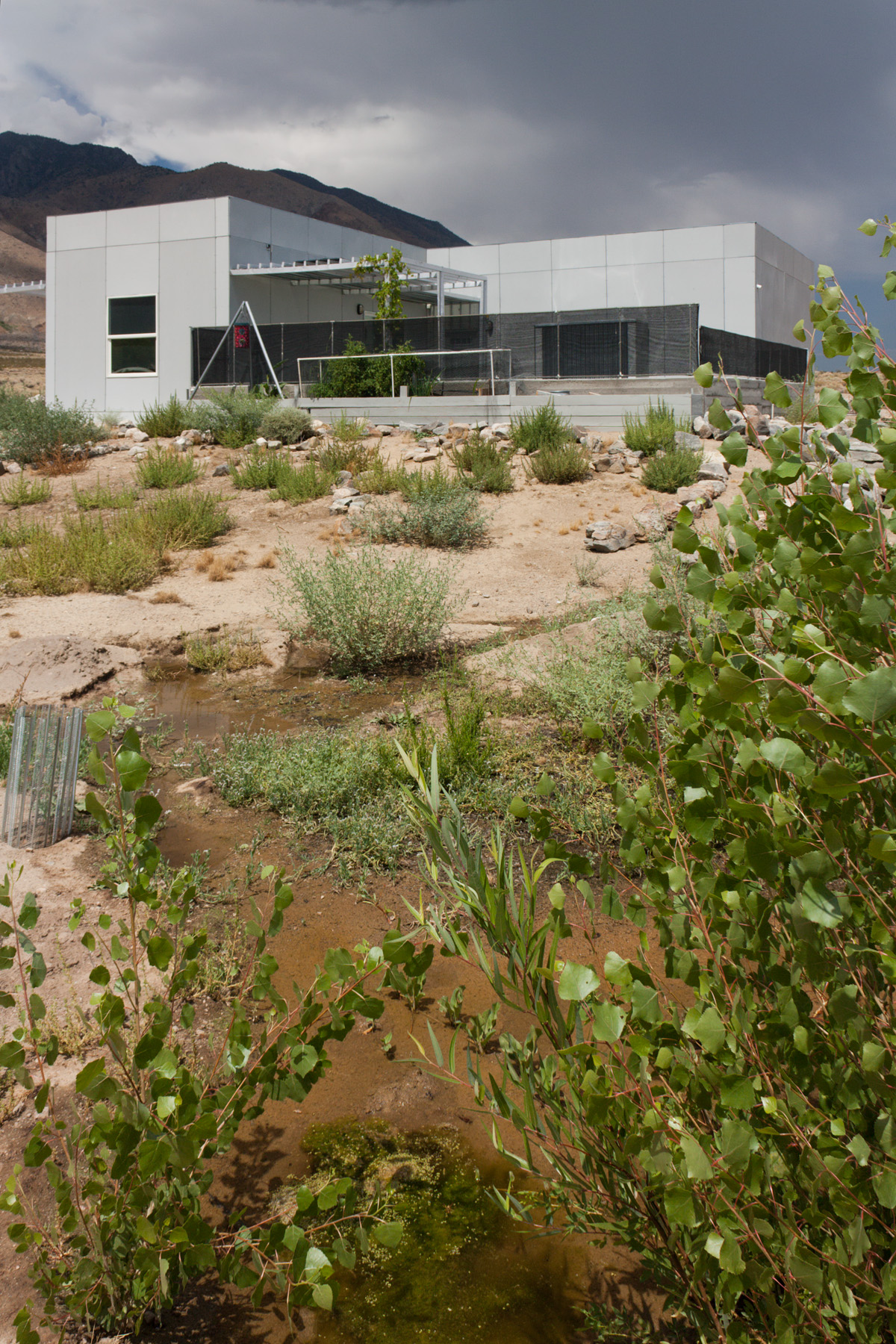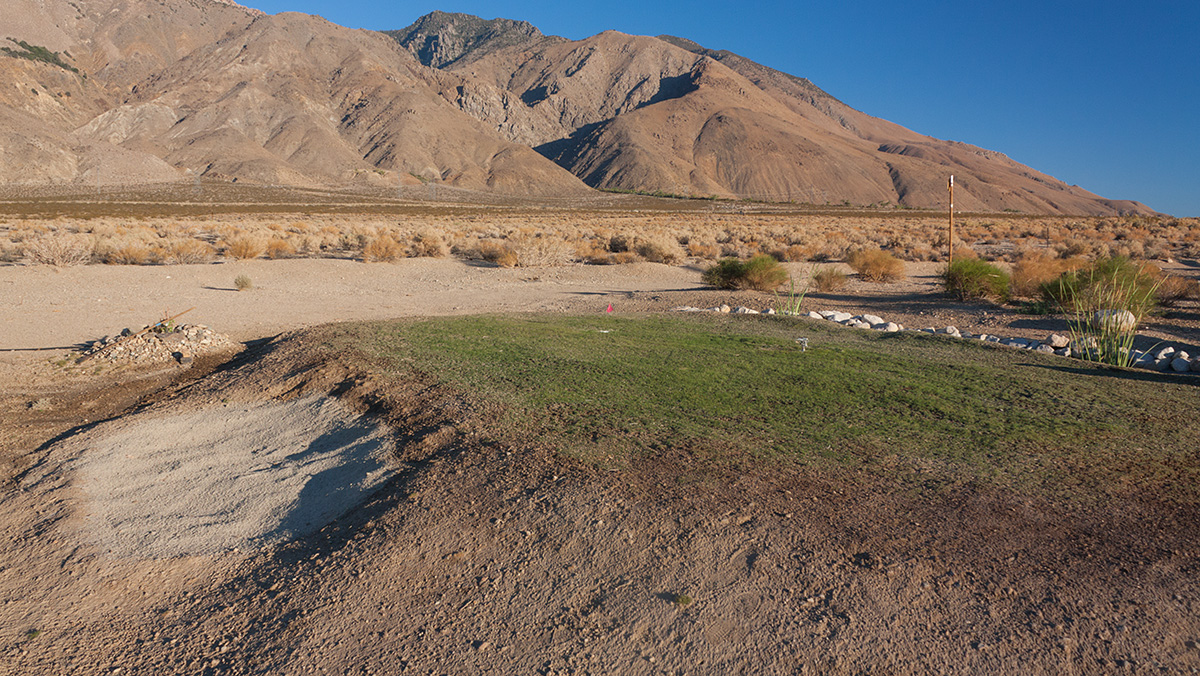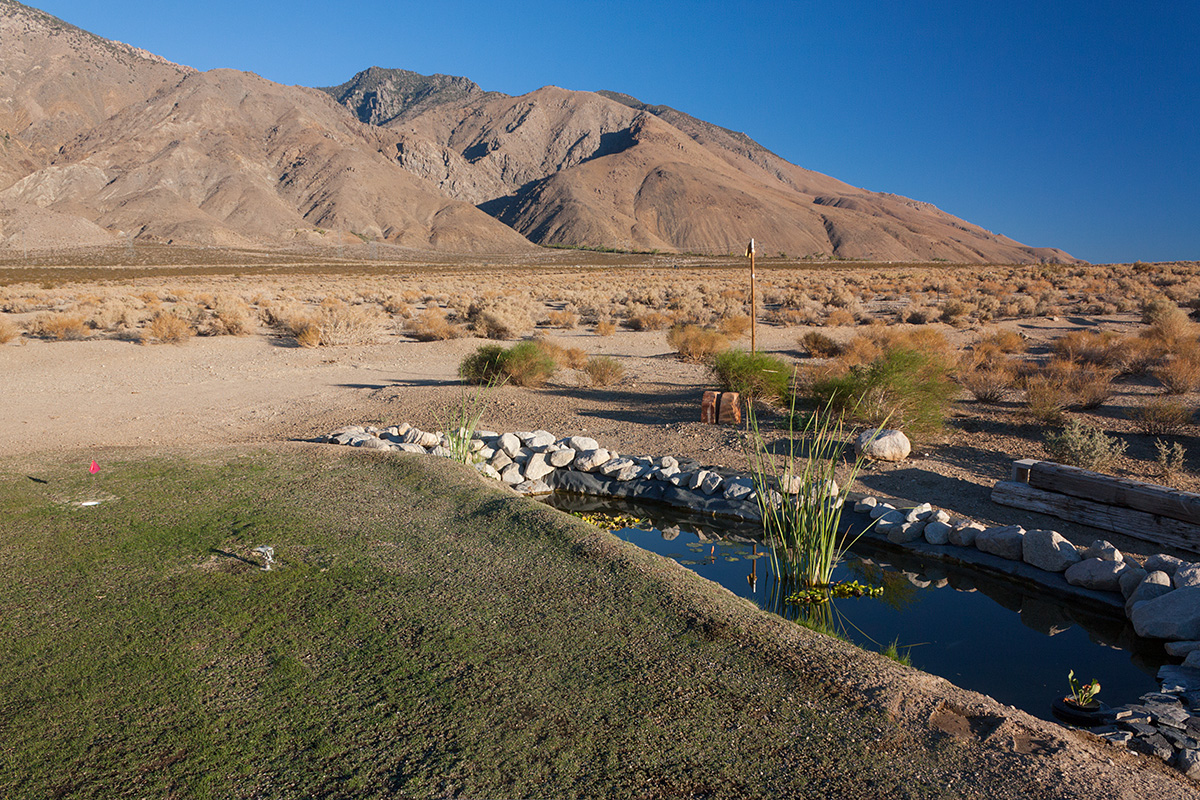— Sunshine + H2O = Future
Sierra East is graced with abundant sunshine. In fact the nearest government weather station, 50 miles south in Inyokern records the highest incidence of solar insolation in North America, with 355 days of sunshine. Besides being a blessing for sun worshipers, it also lends itself to the most cost-effective applications of solar energy technology.
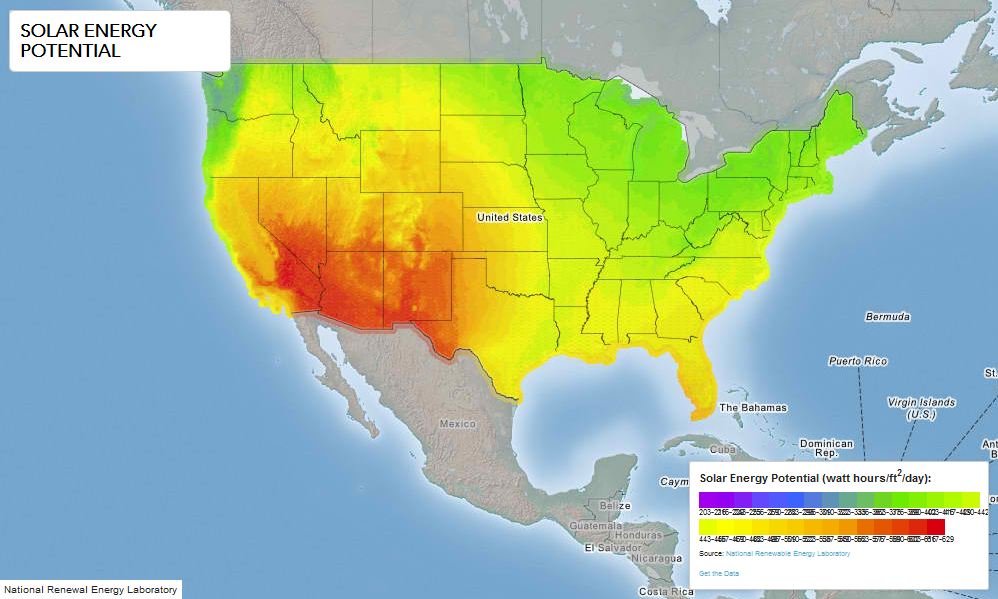
Inyokern, 50 miles south, gets the most sunshine (insolation) in North America, with over 355 sunny days per year.
Of course sunshine is not always welcome by misty weather lovers. This preference can’t be argued, but some facts can be pointed out:
- Very low humidity means both heat and cold do not feel as uncomfortable as in damper climates…and things don’t rust!
- A hat and sunglasses do wonders, and shade around a house makes for pleasant lounging much of the year
- Sierra East gets no hotter than the Valleys of Los Angeles, where millions live in ‘paradise.’
- With the towering Sierra Nevada Range immediately to the west, early and hours of late afternoon daylight can be enjoyed without the sun’s glare.
A sunny environment can be seen as hostile or desolate, unless water is added to the mix. Owens Valley receives the eastern runoff from the Sierra, which charges a massive aquifer system of pure water filtered though miles of granite. There are many springs and artesian wells in the valley, where water flows by hydrostatic pressure alone.
The Cartago Springs well at 410 North Mojave was drilled to 170 feet (130 would have sufficed) and the resulting pressure raised the water’s static level to about 7 feet from the surface! The well was rated at a minimum continuous pumping rate of 100 gallons per minute, which is equivalent to over ten garden hoses simultaneously shooting full bore. And the water tested exceedingly pure, which is not surprising since Crystal Geyser bottles their water from wells 1.5 miles away! See Crystal Geyser Roxane’s own water quality analysis here.
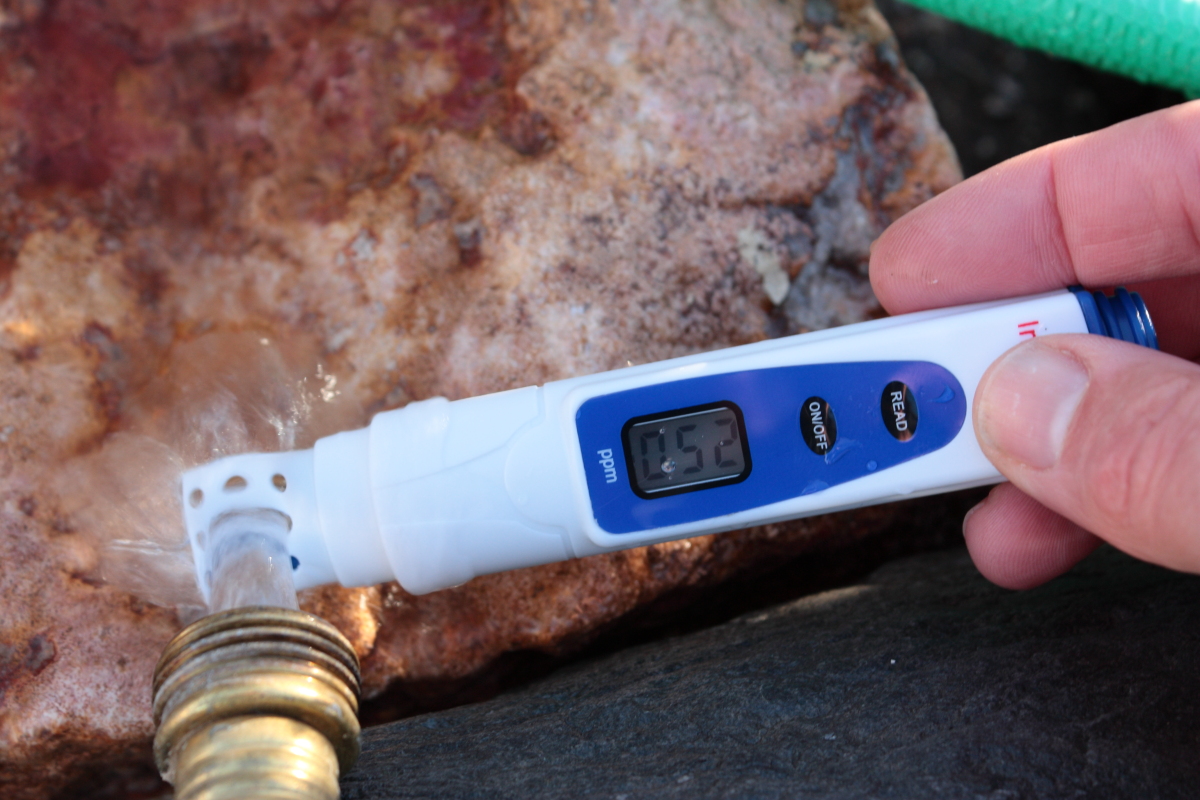
At 52 parts per million of dissolved solids, the water straight out the well is equivalent to bottled.
The well drilled to 170 feet at 124 School Road in Olancha is very similar in water quality. Its static level was measured at 34 feet and it rated at a minimum continuous pumping rate of 90 gallons per minute.
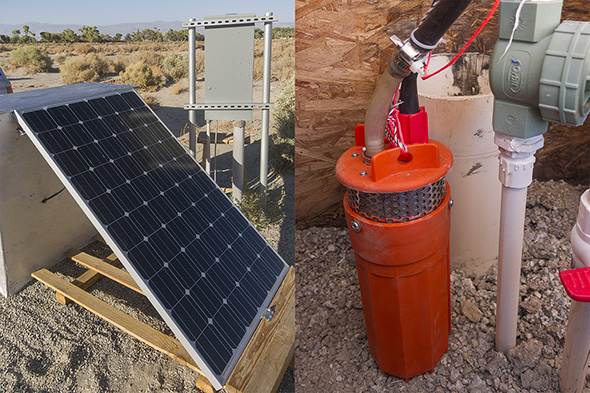
Solar-powered irrigation system installed at Olancha Ranch property Sept. 2013 at a total cost of $500!
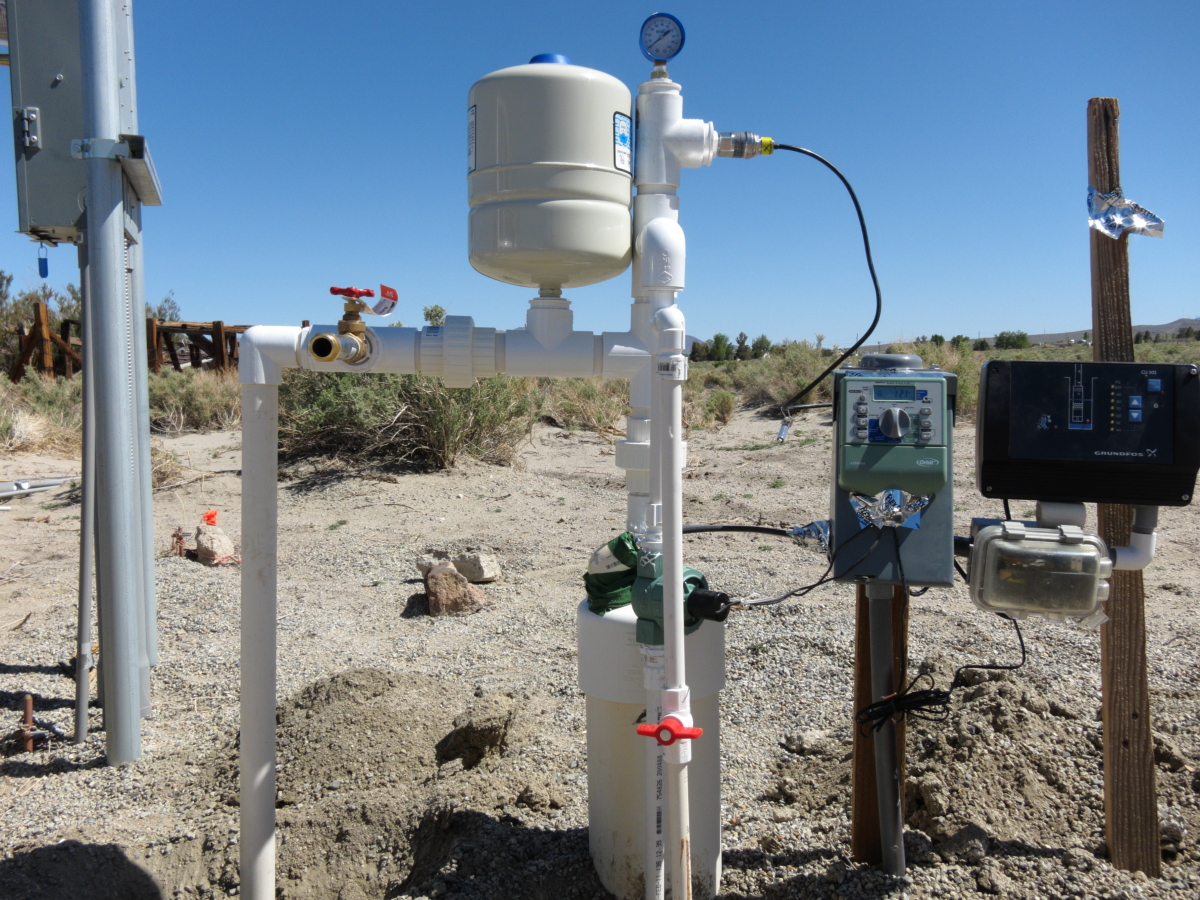
Olancha Well with irrigation system and computerized Grundfos pump control unit (now supplanted by solar)
So the water is abundant and pure, but it still costs to use it, right?
The cost of photovoltaic (solar power) equipment has been falling at a rate of 10% annually and is approaching equivalency with grid power. Prior to getting onto the Los Angeles Department Water and Power grid, 410 North Mojave was set up with eighteen 15-watt panels to drive two 12-volt pumps for irrigation purposes. The cost of panels,controllers, and storage batteries was just over $1000. Because the well water rose so close to the surface, it only takes $100 RV water pumps to deliver over 3 gallons per minute from each pump!
Now that there is grid power on site, the two reasons to keep using the solar power is because the equipment is paid for and because it still works if the grid goes down. The cost of power in the area is perhaps the lowest in California, at approximately 12.5 cents per kilowatt hour (1000 watts for an hour), so it is quite affordable to use water expansively.
Here’s some math to put in perspective how inexpensive it is to pump water here: one of the installed 12 volt pumps conservatively delivers 3 gallons per minute continuously while drawing 50 watts of power. Over an hour, that’s 180 gallons consuming.05 kWh, or 3600 gallons per 1kWh at a cost of 12.5 cents! Put in perspective, one could fill a 660,000 gallon Olympic-size pool for about $23!
So with inexpensive and endlessly abundant water available, and a near future of inexpensive off-the-grid power, there is really no limit to how lush of an environment one can create in this sunny land! The Cartago Springs house uses the solar-powered water to irrigate a garden, run a water feature, ponds, and a stream, and to create a wetlands! A two hole golf course is the next water-use project planned!
A recent project that takes full advantage of inexpensive and abundant water and land is a ‘personal’ golf course with two Tees, 250 yards apart. The green nearest the house under construction has a new pond which is replenished automatically at the same time the raised grassy green is watered and the spillover will create a new small wetland. The pond is big enough that I intend to experiment with raising some crawfish in it.
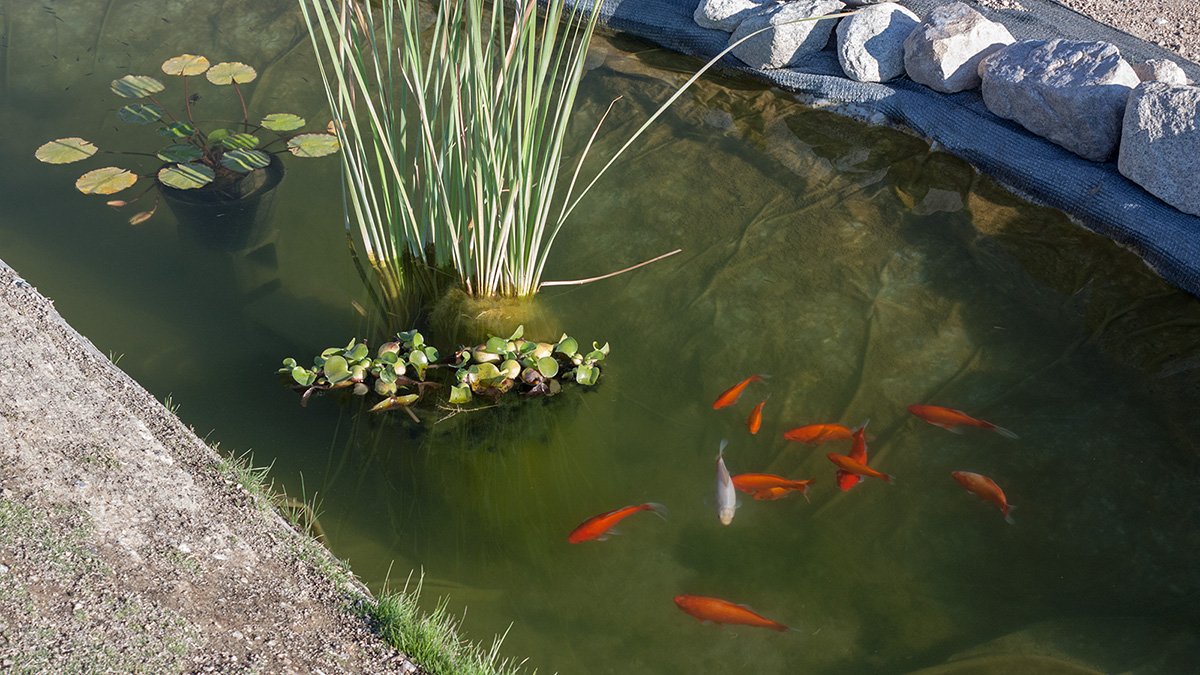
1700+ gallon pond with goldfish, frogs, toads, snails, crawfish and who knows what all has moved in!
Another noteworthy commentary about water availability….
“The last line of the movie “Big Short,” printed on a placard, is “Michael Burry is focusing all of his trading on one commodity: Water.” It sounds very ominous. Can you (Michael Burry) describe this position to me?
Fundamentally, I started looking at investments in water about 15 years ago. Fresh, clean water cannot be taken for granted. And it is not — water is political, and litigious. Transporting water is impractical for both political and physical reasons, so buying up water rights did not make a lot of sense to me, unless I was pursuing a greater fool theory of investment — which was not my intention. What became clear to me is that food is the way to invest in water. That is, grow food in water-rich areas and transport it for sale in water-poor areas. This is the method for redistributing water that is least contentious, and ultimately it can be profitable, which will ensure that this redistribution is sustainable. A bottle of wine takes over 400 bottles of water to produce — the water embedded in food is what I found interesting.”

